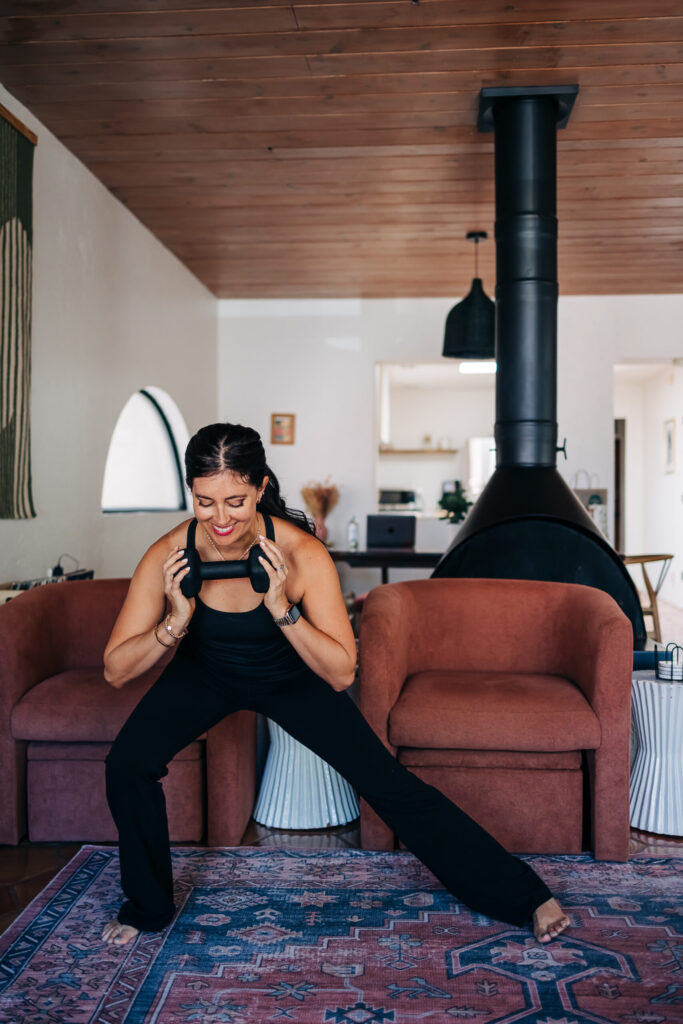Can you build muscle in a calorie deficit? Learn how to lose fat, improve body composition, and preserve muscle while losing weight.
Hi friends! How was the weekend? I hope you had a great one! It was Liv’s school acution, which was a lot of fun, and we also had the usual things like basketball games, mass, and dinner with the fam. I roasted in my sauna blanket and watched The Voice. The Pilot came home after a long trip, so we were glad to have our favorite guy back!
Today’s blog post topic is a beefy one, and a question I get asked often:
Can You Build Muscle In A Calorie Deficit
If you have ever tried to lose weight, you know there are sooooo many methods promising results: intermittent fasting, low-carb plans, points systems, meal replacement shakes, juice cleanses, and the classic calorie deficit.
When I first learned about the concept of a calorie deficit as a trainer, I saw how effective it can be for fat loss. But I also noticed that many women who cut calories aggressively ended up losing not only fat, but also valuable muscle mass.
This is important because muscle is metabolically active tissue. It improves your body composition, supports hormone health, increases resting energy expenditure, and makes everyday activities easier. Building more muscle helps you burn more calories at rest and sustain your results.
A question I hear often is:
“Can you actually build muscle while losing fat in a calorie deficit?”
Today I wanted to answer this popular question, chat about what a calorie deficit is, how it works for fat loss, and what it really takes to build or maintain muscle while losing fat.

What Is Calorie Deficit
A calorie deficit happens when you consume fewer calories than your body needs to maintain its current weight.
Your body has a maintenance calorie level: the amount of energy required each day to keep you alive and active without gaining or losing weight. When you consistently eat below that level, your body draws on stored energy such as body fat to make up the difference.
For example: if your body burns 2,000 calories per day but you consume 1,500 calories, you create a 500-calorie deficit. Over time, this energy gap can lead to weight loss, ideally by mobilizing fat stores.
How Does A Calorie Deficit Work
Creates an Energy Gap
A calorie deficit forces the body to draw on stored energy – primarily body fat but sometimes lean tissue – to meet daily needs.
Affects Body Composition
While a deficit promotes fat loss, it can also lead to muscle loss if protein is inadequate or if you are not performing resistance exercises. Preserving muscle is KEY to achieving a lean, strong look rather than simply becoming smaller.
Impacts Performance and Recovery
Severe deficits can reduce energy levels, hinder performance in resistance training, and slow recove